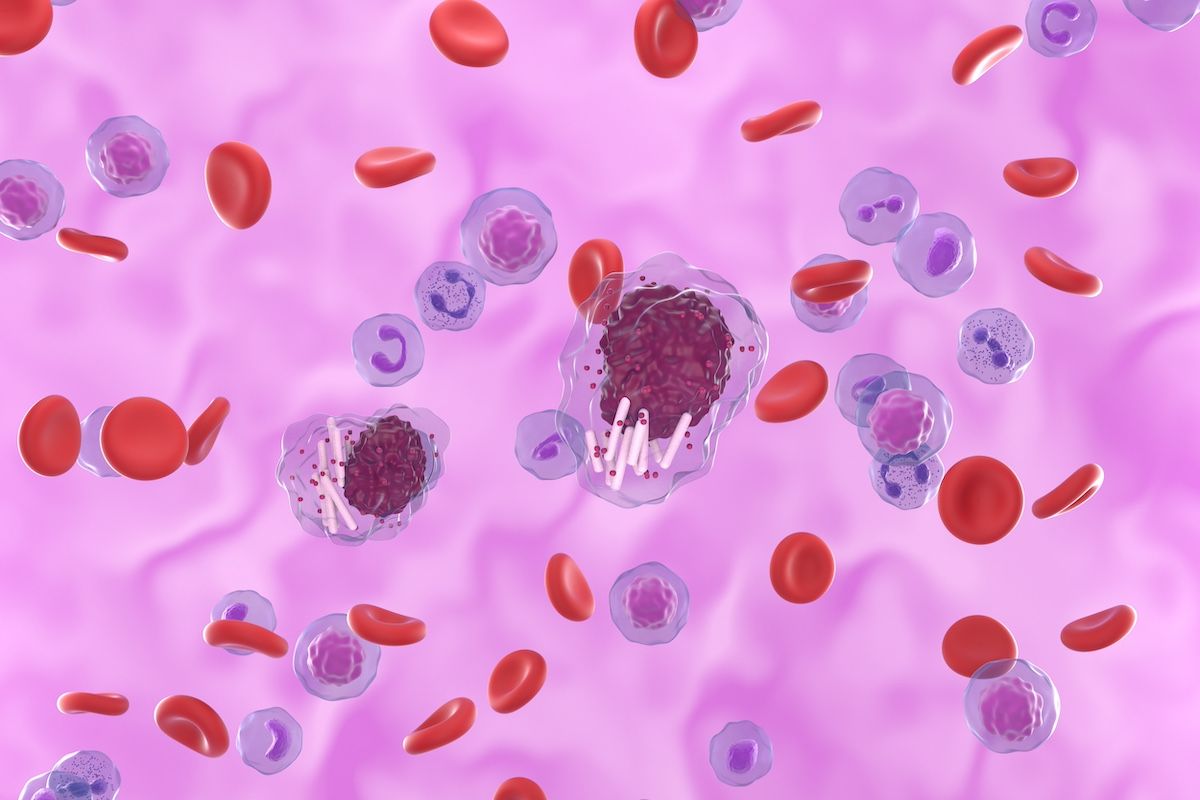- Center on Health Equity & Access
- Clinical
- Health Care Cost
- Health Care Delivery
- Insurance
- Policy
- Technology
- Value-Based Care
Real-World Database Yields New Potential Safety Signals for Bendamustine
The authors said their analysis should help clinicians better monitor patients for potential adverse events.
A new report has identified new adverse event (AE) signals which the authors say may be associated with the chronic lymphocytic leukemia (CLL) therapy bendamustine (Treanda).
The data come from an analysis of real-world AE reports, which was published in the journal Frontiers in Pharmacology.1 The authors say the findings could help clinicians better monitor patients for potential AEs.
Bendamustine has been approved in the US to treat certain patients with non-Hodgkin lymphoma (NHL) and CLL since 2008. | Image Credit: © Laszlo - stock.adobe.com

Bendamustine has been approved in the US to treat certain patients with non-Hodgkin lymphoma (NHL) and CLL since 2008, noted corresponding author Li Chen, PhD, of China’s Sichuan University, and colleagues. Since then, real-world data have shown that the therapy can lead to positive results in patients with relapsed or refractory hematologic malignancies.
However, the authors noted that some patients experience AEs, ranging from rashes and fever to neutropenia and progressive multifocal leukoencephalopathy (PML). A 2020 study that analyzed 95 patients with newly diagnosed or refractory or relapsed NHL found that patients without prior exposure to chemotherapy were at a particularly high risk of skin toxicities.2
Yet, Li and colleagues said there has not yet been a systematic examination of real-world AE signals that takes advantage of international reporting databases.1 They therefore decided to utilize the FDA’s Adverse Event Reporting System (FAERS) database to help create a more comprehensive view of bendamustine’s AE record.
The investigators extracted AE reports filed between January 2017 and September 2023 related to bendamustine and AEs, ultimately finding 5,195 reports that identified bendamustine as the “primary suspected” drug at play and which met inclusion criteria. A total of 2406 cases resulted in “severe outcomes,” including hospitalization and death, the authors said. AEs were more frequently reported in male patients than in female patients (57.73% vs 42.27%), the authors found, and nearly 60% of the reports occurred in patients who were over the age of 65 years.
Li and colleagues said many of AEs mentioned in the database were also mentioned on bendamustine’s label. However, they also found 16 additional significant AEs, which they said were not expected. These included 169 cases of malignant neoplasm progression, 88 cases of disease progression, 58 cases of peripheral neuropathy, and 58 cases of sepsis. The authors also found a strong signal in the data for hypogammaglobulinemia, “which is concerning due to its potential to increase infection susceptibility following bendamustine treatment,” Li and colleagues said.
The authors added, though, that treatments like chemotherapy, radiation therapy, and immunotherapy can compromise patients’ immune systems, so they said it is “challenging to distinctly attribute” infections to therapy-induced complications like lymphopenia or hypogammaglobulinemia.
“Consequently, whether it's a bendamustine-induced ADR [adverse drug reaction] or the patient’s own underlying condition, physicians are advised to vigilantly monitor patients’ vital signs and immunoglobulin levels to preempt potential infections during bendamustine treatment is of the utmost importance,” Li and colleagues said.
While the investigators said they found AE reports for conditions that were not included on the drug’s label, they also found the opposite. Specifically, though the bendamustine package insert mentions psychiatric disorders and skeletal muscle-related AEs, the authors did not detect active signals for those conditions in their data set.
More broadly, the authors said they found that most AEs occurred relatively quickly; the median onset time was 13 days, suggesting that the risk of AEs may go down over time.
The authors cautioned that the database consists of spontaneous reports that often lack important demographic and clinical data, which they said limited their ability to adjust for confounding factors, among other limitations.
Still, they said their findings “suggest a need for enhanced patient education and regular skin monitoring for those on bendamustine, with specific attention to specific skin changes,” they wrote.
References
- Li D, Zhang Y, Ni JQ, et al. Post-marketing risk analysis of bendamustine: a real-world approach based on the FAERS database. Front Pharmacol. 2024;15:1372401. doi:10.3389/fphar.2024.1372401
- Uchida M, Mori Y, Akiba K, et al. Risk factors for skin toxicities associated with bendamustine-based chemotherapy in patients with non-Hodgkin lymphoma. Biol Pharm Bull. 2020;43(10):1577-1582. doi:10.1248/bpb.b20-00428
